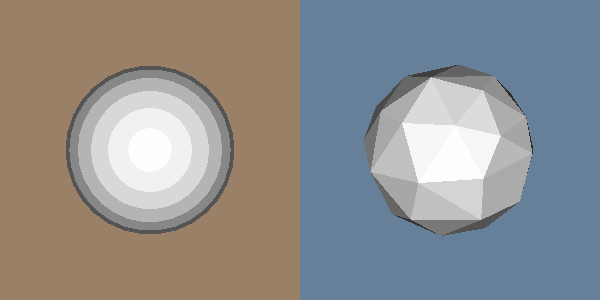QuadricDecimation
vtk-examples/CSharp/Meshes/QuadricDecimation
Description¶
A tutorial on how to setup a Windows Forms Application utilizing ActiViz.NET can be found here: Setup a Windows Forms Application to use ActiViz.NET
Note: As long as ActiViz.NET is not build with VTK version 6.0 or higher you must define the preprocessor directive VTK_MAJOR_VERSION_5.
Other languages
See (Cxx)
Question
If you have a question about this example, please use the VTK Discourse Forum
Code¶
QuadricDecimation.cs
using System;
using System.Collections.Generic;
using System.ComponentModel;
using System.Windows.Forms;
using System.Diagnostics;
using Kitware.VTK;
namespace ActiViz.Examples {
public partial class Form1 : Form {
public Form1() {
InitializeComponent();
}
private void renderWindowControl1_Load(object sender, EventArgs e) {
try {
QuadricDecimation();
}
catch(Exception ex) {
MessageBox.Show(ex.Message, "Exception", MessageBoxButtons.OK);
}
}
private void QuadricDecimation() {
vtkSphereSource sphereSource = vtkSphereSource.New();
sphereSource.Update();
vtkPolyData input = vtkPolyData.New();
input.ShallowCopy(sphereSource.GetOutput());
Debug.WriteLine("Before decimation" + Environment.NewLine + "------------" );
Debug.WriteLine("There are " + input.GetNumberOfPoints() + " points." );
Debug.WriteLine("There are " + input.GetNumberOfPolys() + " polygons." );
vtkQuadricDecimation decimate = vtkQuadricDecimation.New();
#if VTK_MAJOR_VERSION_5
decimate.SetInputConnection(input.GetProducerPort());
#else
decimate.SetInputData(input);
#endif
decimate.Update();
vtkPolyData decimated = vtkPolyData.New();
decimated.ShallowCopy(decimate.GetOutput());
Debug.WriteLine("After decimation" + Environment.NewLine + "------------" );
Debug.WriteLine("There are " + decimated.GetNumberOfPoints() + " points." );
Debug.WriteLine("There are " + decimated.GetNumberOfPolys() + " polygons." );
vtkPolyDataMapper inputMapper = vtkPolyDataMapper.New();
#if VTK_MAJOR_VERSION_5
inputMapper.SetInputConnection(input.GetProducerPort());
#else
inputMapper.SetInputData(input);
#endif
vtkActor inputActor = vtkActor.New();
inputActor.SetMapper(inputMapper);
vtkPolyDataMapper decimatedMapper = vtkPolyDataMapper.New();
#if VTK_MAJOR_VERSION_5
decimatedMapper.SetInputConnection(decimated.GetProducerPort());
#else
decimatedMapper.SetInputData(decimated);
#endif
vtkActor decimatedActor = vtkActor.New();
decimatedActor.SetMapper(decimatedMapper);
vtkRenderWindow renderWindow = renderWindowControl1.RenderWindow;
this.Size = new System.Drawing.Size(612, 352);
// Define viewport ranges
// (xmin, ymin, xmax, ymax)
double[] leftViewport = new double[] { 0.0, 0.0, 0.5, 1.0 };
double[] rightViewport = new double[] { 0.5, 0.0, 1.0, 1.0 };
// Setup both renderers
vtkRenderer leftRenderer = vtkRenderer.New();
renderWindow.AddRenderer(leftRenderer);
leftRenderer.SetViewport(leftViewport[0], leftViewport[1], leftViewport[2], leftViewport[3]);
leftRenderer.SetBackground(.6, .5, .4);
vtkRenderer rightRenderer = vtkRenderer.New();
renderWindow.AddRenderer(rightRenderer);
rightRenderer.SetViewport(rightViewport[0], rightViewport[1], rightViewport[2], rightViewport[3]);
rightRenderer.SetBackground(.4, .5, .6);
// Add the sphere to the left and the cube to the right
leftRenderer.AddActor(inputActor);
rightRenderer.AddActor(decimatedActor);
leftRenderer.ResetCamera();
rightRenderer.ResetCamera();
renderWindow.Render();
}
}
}
